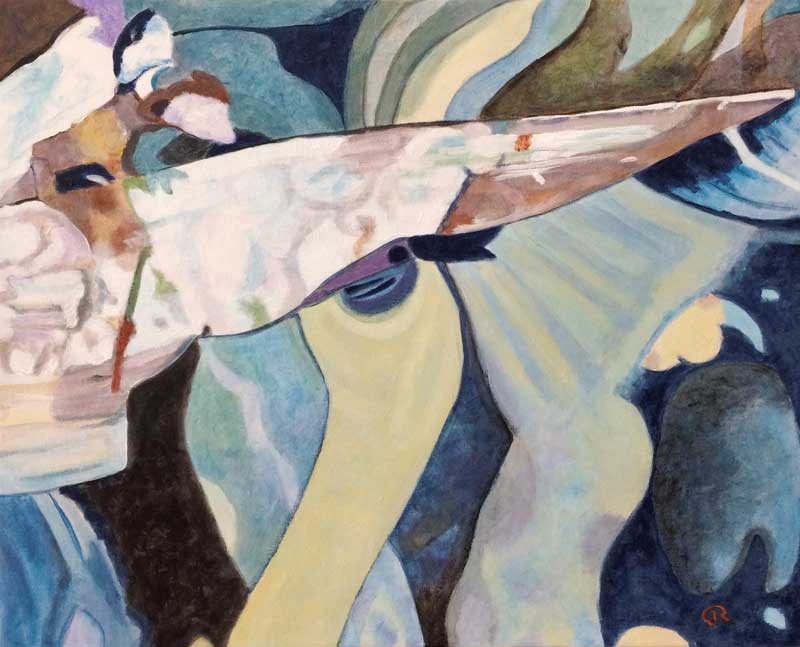
Early each spring, my garden offers me images for the work I do as chaplain. Some days as I walk through the garden, there is mud everywhere. There is much to be cleaned up, and there are stark reminders of last year’s mistakes and failures. I begin to think how much work this garden will require. On some of these days, I wonder what makes me think that the garden will turn out any better this year.
On most days, however, I see more than last summer’s shortcoming. I see the mud but also the possibilities. I actually look forward to the coming work and know that I will bring with me the lessons from past successes as well as failures. Those are the days that the garden holds promise and endless possibilities. On those days, I know for sure that this time the garden is going to be good! These are my images for the work I do as chaplain: walking through the mud; seeing possibilities; and watching for signs of growth that point to hope, as new life begins to reach for the light.
In this setting, hope and signs of growth often lie buried deep beneath the surface. In this space, through sharing stories, we find ways to uncover hope and to notice small signs of new life beginning to take hold.
During the past five years, much of my chaplaincy work has been with veterans in a substance abuse treatment program. Several times a week, we meet in small groups to explore the role of spirituality in recovery. At their best, these groups become a space for listening, for giving voice to the big questions, and for allowing these questions to sit with us. Many veterans come to this place weary and heavy-laden indeed. They carry burdens of grief or guilt, loss or shame: burdens some of them have already carried for decades. They come with the humility to be honest about the wreckage they have left behind and with the courage to ask for help.
In this setting, hope and signs of growth often lie buried deep beneath the surface. In this space, through sharing stories, we find ways to uncover hope and to notice small signs of new life beginning to take hold. We switch to another language, to another way of looking at the world and at ourselves. This is no longer the language of facts and proof and differences; this is the language of imagination and possibilities and connections. Stories are the language of spirituality. Spirituality pertains to what gives meaning and purpose to our lives, provides a framework, and offers continuity and community. As Ernest Kurtz and Katherine Ketcham write in The Spirituality of Imperfection, human beings throughout history have resorted to the medium of stories, “which use words in ways that go beyond words to speak the language of the heart.”
A story may catch us off-guard when we suddenly recognize ourselves in it. Stories can charm their way past our defenses, bypass our resistance, and overturn our ready answers. Standing in a long tradition of master storytellers, Jesus often taught through parables. To those who already had all the answers and who were sure they always knew right from wrong, Jesus would respond with a story: “There was a man who had two sons” or “A man was going down from Jerusalem to Jericho.” Stories work because we recognize the people and situations in them, and we will likely meet ourselves in there. God and truth and right are no longer abstracts in a story: they are suddenly there in our midst. In Storycatcher, Christina Baldwin quotes from the Hasidic tradition: “What is truer than truth? The Story.”
As we relearn how to tell and to listen to stories, they are no longer “just stories”—they become truer than truth. There are times in a group that the change in the room is tangible: people relax and may even sit back while we all become listeners as someone begins, “Here is a story, a true story.” As people begin to tell and hear and value their own stories, they may also begin to change and give new shape to the narratives of their lives. It can happen that someone comes across the answer he or she has been searching for, already contained within the story. There is always awe in the silence that follows such a revelation and awe in the voices that gently ask the speaker, “Did you hear what you just said?”
The language of spirituality is the vocabulary of hope, in Kurtz and Ketcham’s elegant phrasing. Spirituality offers guidance and direction. More than explanations, spirituality offers forgiveness. Hope, direction, and forgiveness are what veterans in my groups are searching for. With each new group, we return to the Exodus story as a narrative of the long, long road to freedom. Especially in this setting, it becomes clear that this journey is not only a geographical but also a spiritual journey. Far more than “changing people, places, and things,” this journey requires changing the way we see ourselves. All travelers on this road are not merely changing where they are but who they believe they are. Since spirituality is about “how I see myself and my place in the world,” one of my tasks is to listen for changes in another’s self-understanding. Even finding a starting point for this journey can require real courage. Often as we begin this conversation, someone in the back of the room will say, barely audibly, “I don’t even know who I am.” As we talk about the losses veterans carry with them, more than one will name the most painful loss: “I lost my way, my soul, myself.”
While watching growth happen is a joy, watching grace happen is a gift.

In this particular garden where there often is a lethal lack of hope, heartbreak and enormous challenges grow like weeds. There can be open resistance and even hostility. The question is never far away: what makes anyone think it will turn out better this time? Any growth is all the more precious because, here, hope is always a fragile sprout. Here we know the odds, the very real dangers, and setbacks. We know that some veterans will leave the program in anger, in impatience, or in despair. We know that some may return again years later, ready to change, and that some may not live through their first weekend out.
While watching growth happen is a joy, watching grace happen is a gift. In one group, this exchange took place between a veteran in his 60s and another veteran a good 30 years younger: “Listen to me, brother: you don’t want to keep doing this; you can still change.” The response: “I hear you. I love you, man, but in 30 years I don’t want to end up sitting where you are now.” Direction, guidance, acceptance, hope, love—it was all there.
Some weeks ago, a very young man in the group of newcomers mustered the courage to ask a question that was haunting him. He described his struggle with drugs and his failing to live up to his good intentions, saying, “I can’t do what I really want to do, and I keep doing things I don’t want to do.” The word his church’s leaders had used to judge him when he went to them for help was seared in his memory. He asked, “Do you think that makes me defective?“ Silently I said, “Thank you, Paul,” for allowing me to respond with confidence, “No, that makes you human” (Rom. 7:19). The young man let out a long breath as others silently nodded their agreement. Spirituality is the language of hope.
Of course, the image and metaphor of the garden is ancient. The glorious hymn of awe and praise that is the first chapter of Genesis is followed by this image in the second, “and the Lord God planted a garden in Eden, in the east” (Gen. 2:8). As soon as the Holy One had called light and skies and stars, seas and mountains into being with a word, the real work began. God looks at this world and at us as a gardener does, seeing this year’s potential and not last year’s failures. Like any gardener, God looks around, sees the endless possibilities, and gets to work. And the work continues, some of us planting, some watering, while God gives the growth (1 Cor. 3:6).




Comments on Friendsjournal.org may be used in the Forum of the print magazine and may be edited for length and clarity.